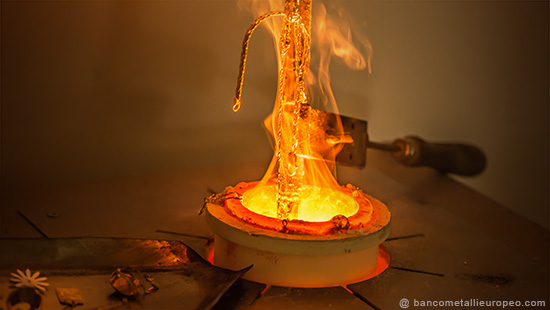Gold and Markets

The price of gold is set by the market, but since 1919, the London Stock Exchange sets twice a day a reference price (the so-called gold fixing). The five most important merchants of the world for the exchange of physical gold (in English "the Club of Five") are: Johnson Matthey, Mocatta & Goldsmith, Samuel Montagu and Rothschild Sharps Pixley. Historically, gold has been used to support currency in an economic system based on the gold standard, in which the value of each currency is established equivalent to a certain amount of gold. As part of this system, governments and central banks tried to control the price of gold, setting the parity with currencies. For a long period (1789-1933) the United States fixed the price of gold at $ 20.67 / ounce (equal to $ 0.66456 / g) - except for slight variations in time of war - then raised to 35 U.S. dollars / ounce (equal to $ 1.12527 / d) in 1934. maintain this price in 1961 had become a difficult task; central banks of the United States of America and Europe began to coordinate their actions to keep the price stable against the forces of the market.
On 17 March 1968, economic circumstances caused the failure of these efforts, it was introduced a dual system, which fixed the price of gold at $ 35 / ounce for international currency transactions, leaving him free to float as it regarded the exchanges between private. This dual system was abandoned in 1971, when the price of gold was left free to vary in accordance with the laws of the market. Central banks still hold gold reserves to guarantee the value of their currencies, although the overall volume of these reserves has been gradually declining (due to the progressive issue of currency in the absence of equivalent gold or any other metal).
Since 1968 the price of gold has undergone large swings in the markets, with a record of over $ 1,900 / ounce (more than 60 $ / g) in August 2011 [18], and a minimum of $ 252.90 / ounce (8,131 $ / g) 21 June 1999 (London gold fixing). The price went up to 420 $ / ounce (13.503 USD / d) in 2004 due to the devaluation of the U.S. dollar, the price of gold in other currencies (eg euro) has been in the same period increased by less, however, substantial at 10% the share of 330 euro / ounce (10,6 € / g).